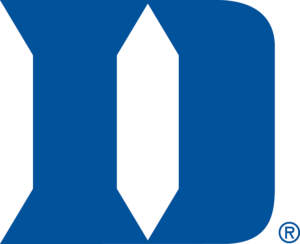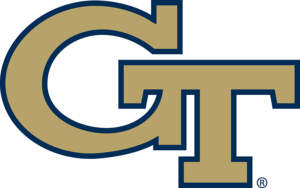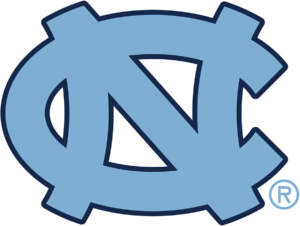Nov. 30, 2004
Those of you who have read this column over the years realize I am a graduate of the University of Notre Dame, and once in a while I take advantage of an open date on the Clemson schedule to attend a game in South Bend. On October 2, I returned for the Notre Dame-Purdue game (the closest thing the Irish have to a South Carolina game in terms of an in-state rival).
While much of the pregame talk in the press box centered around the respective school’s quarterbacks (Brady Quinn of Notre Dame and Kyle Orton of Purdue), there was also commentary concerning the future of Notre Dame’s football schedule. Recent reports have stated that the Irish would like to start playing seven home games per year, instead of the six they have played in all but two seasons since Notre Dame Stadium opened in 1930.
That might surprise some of you, because one would think Notre Dame could sign a one-game or multi-year contract with many schools to play in South Bend exclusively. But, due to the school’s national alumni base, Notre Dame has always felt it should play a challenging national schedule with home and away series.
But, with NBC paying the university $1 million per home game for the television rights, it makes financial sense, plus the possibility for more victories, to play seven home games. Notre Dame has won 85 percent of its games in Notre Dame Stadium, and Head Coach Tyrone Willingham has been quoted as saying (jokingly) that he would like to play nine home games a year. Do not be surprised if you see a Notre Dame-San Diego State game on your local NBC station in the not-too-distant future.
The landscape of college football has changed, really just in the last few years. In fact, one can make a claim that the biggest change has happened in the last year when it comes to scheduling.
Last year’s uproar over leaving Southern California out of the national championship game created enough of a stir that the formula for determining the top two teams in the Bowl Championship Series National Championship game was altered. The “mad scientists” who run the BCS had all kinds of statistical rankings that put a heavy emphasis on strength of schedule. Both polls had the Trojans ranked #1 at the end of the 2003 regular season, yet they were left out of the National Championship game (Sugar Bowl) because Oklahoma and Louisiana State had the top-two BCS poll numbers.
As a result, the new BCS formula, one I think we will see for years to come, puts much more emphasis on the two traditional polls, the Associated Press and the ESPN/USA Today Coaches’ Poll, and less on strength of schedule and victory margin. What does this mean? It means that teams will not schedule strong non-conference opposition in the future. This will be a recurring national trend in the coming years. No more Southern California vs. Auburn, and no more Oklahoma vs. Alabama.
Writers and coaches who cast votes in the major polls take strength of schedule into account when they do their voting, but the most important element is overall record. If a team is 4-0 against teams in the middle of the pack or at the bottom of their respective conference, it will get a higher ranking than a 2-2 team that has lost to the top two teams in the nation.
Fans love to see teams play the most exciting non-conference teams in the nation, but is that a sound philosophy in the long run? For every example that shows the philosophy, “You have to play the best to be the best,” there is the corresponding theory, “You need to win games to build confidence.” Louisiana State played in the National Championship game last year after a non-conference schedule that included Louisiana-Monroe, Western Illinois, and Louisiana Tech. Oklahoma had North Texas.
Speaking of Oklahoma, Clemson was scheduled to play the Sooners in 2008 at Norman and in 2011 at Clemson. But, by mutual consent of both schools, those two games were cancelled. Some Tiger fans were disappointed, but from a common-sense standpoint, it was the correct decision by Athletic Director Terry Don Phillips.
First, Clemson was at a disadvantage with such a long time in between the games, putting the Tigers’ home opportunity in jeopardy if Oklahoma wanted to buy out the game before 2011. Second, Clemson now has the opportunity to have another home game in 2008, the next year the NCAA allows a school to play 12 regular-season games. Clemson could play as many as eight home games that year, as Furman, Central Florida, and South Carolina are already non-conference opponents slated to come to Tigertown.
Why eight home games? The bill for the WestZone project will be substantial, and every home game generates more dollars to pay off that debt. The biggest reason for a change in philosophy in terms of non-conference home games for all ACC teams is the new 12-team league itself. This is not the same conference we saw in the 1970s and 1980s. With the addition of Miami (FL), Virginia Tech, and Boston College, Clemson’s eight conference games will be difficult, year in and year out. The Hurricanes have won five national championships since 1987 and is a candidate for a sixth this year. The Hokies have played for the national championship recently and been to a bowl game every year since 1993, while Boston College is the only school in the nation to win a bowl game each of the last four years.
The strength of schedule of the “new” ACC is felt immediately on Clemson’s program. The Tigers traded a North Carolina program that has won five games the last two years for Miami in 2004 and 2005. With Boston College in the same Division as Clemson, that means the Tigers will play the Eagles every year, including 2005.
Another factor to take into consideration is the state rivalry game with South Carolina. Unlike most of the other schools in the ACC, or in the country for that matter, Clemson’s biggest rivalry game is against a non-conference opponent. The result of last year’s game withstanding, this game will be a difficult, competitive game almost every year.
Thus, Clemson has just two games per year (except seasons with 12 regular-season games) to play with when it comes to the non-conference schedule. N.C. State played Ohio State this year, but they do not have an automatic non-conference rivalry game like Clemson. Their other non-conference games are against Richmond and East Carolina.
My point is that the days of Clemson playing a home-and-home series with Texas A&M, Oklahoma, or Auburn in an 11-game season will soon be over for the reasons listed above. Historically, you have to wonder how things might have been different in previous years as well.
In 1991, Clemson lost a regular-season, non-conference game to Georgia by a score of 27-12. Had the Tigers met and defeated say…Central Florida in a non-conference home game instead, they would have finished the regular season with a 10-0-1 record and ranked #3 in the nation heading into the bowls. The Tigers would have played in the Orange Bowl against an undefeated Miami (FL) team, with an outside shot at the national title. Washington was the only other undefeated team in college football through the regular season that year and played in the Rose Bowl.
Don’t get me wrong, everyone enjoyed the games with Georgia, and they were classics that enhanced the heritage of Clemson football in the 1980s. But, so did playing for a National Championship in the Orange Bowl in 1981.
| 2006 | |
| Sept. 2 | Ball State |
| Sept. 23 | at Temple |
| Nov. 18 | South Carolina |
| 2007 | |
| Sept. 8 | Louisiana-Monroe |
| Sept. 15 | Temple |
| Nov. 17 | at South Carolina |
| 2008 | |
| Aug. 30 | Furman |
| Sept. 13 | Central Florida |
| Nov. 22 | South Carolina |
| TBA | TBA |
| 2009 | |
| Sept. 5 | Middle Tennessee |
| Sept. 12 | Pittsburgh |
| Nov. 21 | at South Carolina |
 Duke
Duke 
 Florida State
Florida State  Louisville
Louisville  Furman
Furman  South Carolina
South Carolina  LSU
LSU  Troy
Troy  Georgia Tech
Georgia Tech  Syracuse
Syracuse  North Carolina
North Carolina  Boston College
Boston College  SMU
SMU 





